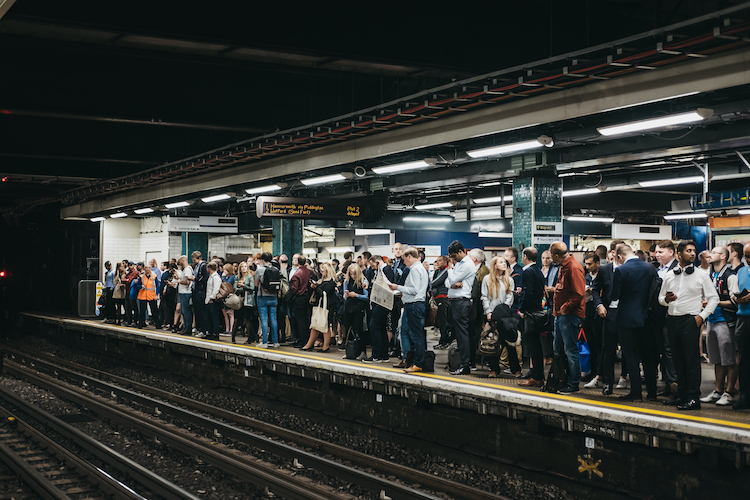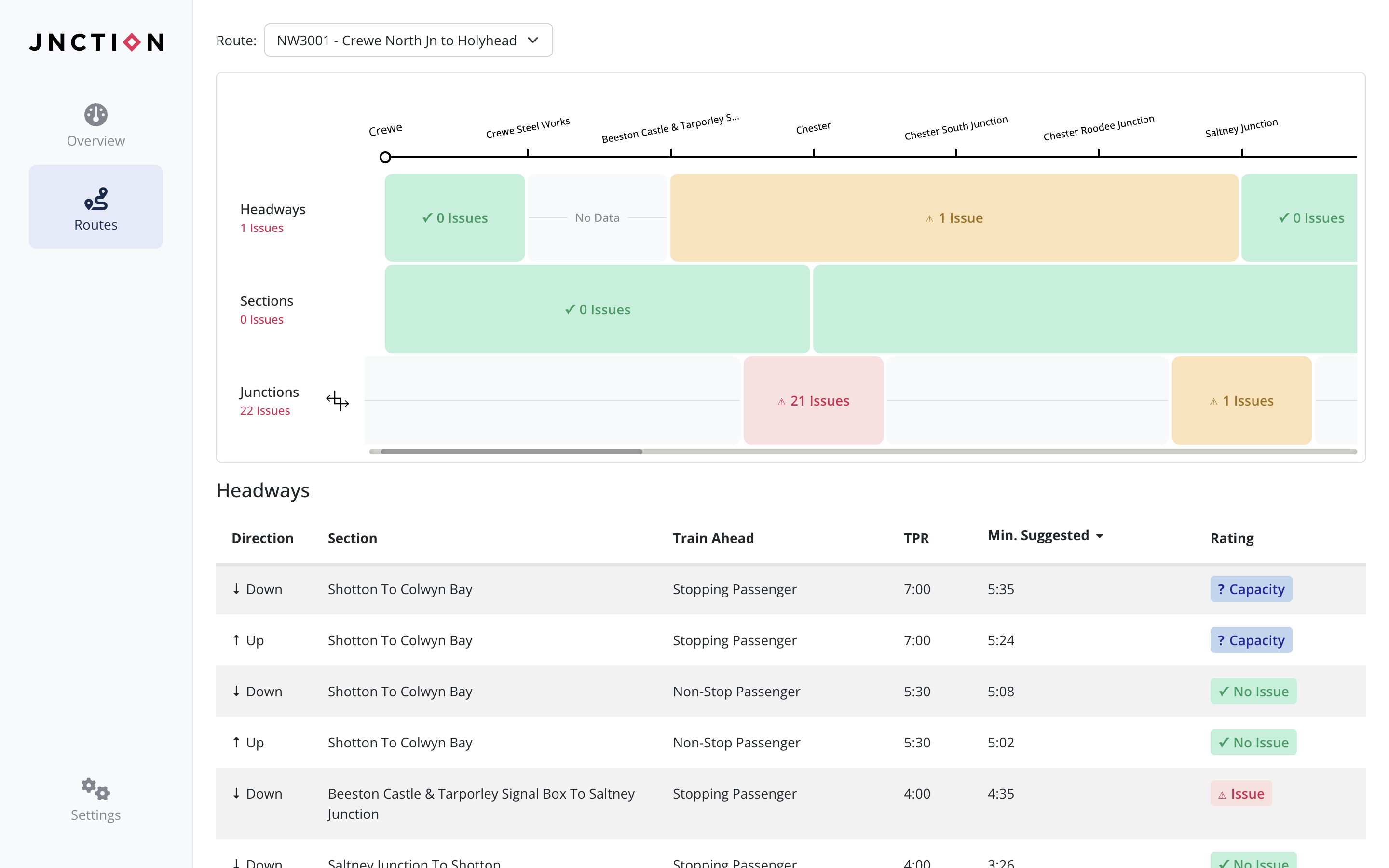Mike Lloyd, MD of Jnction, argues that the Rail Industry needs to follow through on its promises to put the customers first in the ‘new normal’ era that will follow Covid-19. He believes making the best use of new digital technology is essential to deliver the changes that will meet that promise to every passenger.
We’ve all seen a lot of mission statements in Rail in recent years about how the industry will put customers first. So how is that working in practice?
If you ask the average passenger, they would not give a ringing endorsement. The railway is a part of everyday life in Britain – but it is a system that has increasingly struggled with delays and disruptions, insufficient and untimely travel information, which are all in stark contrast to regular annual fare hikes. Now that the pandemic has halted commuting indefinitely, passengers now realise that they don’t need to rely on trains when they can work remotely.
The Current Environment
The Williams Review, published in March 2019 confirms that passengers have a lack of trust in the railway, while they don’t believe that they are treated as individuals. One of those questioned stated that they didn’t “Take the train to the airport or holiday as they didn’t know if they’d get there on time” underlining the fact that passengers don’t trust the railway when it comes to time-critical journeys. In another example, a respondent said that they took an earlier train so that they knew they’d make an important meeting.
Yes, the quality and comfort of new rolling stock introduced by the franchise competitive bidding have been a big plus, and safety first has absolutely borne results, with impressive results over the recent decade that the industry can be proud of, showing what can be done when a goal is taken very seriously.
But in general, over the last 25 years of a franchise operation, there has been a misalignment between the objectives of Network Rail and the TOCs, which has not served passengers best interests.
I heard recently about a TOC that is apparently eschewing technology and focusing on improving traditional communication via their staff to provide better service to customers. This got me thinking about how big a gap there is between the use of the latest digital technologies in the rail industry, compared with other sectors such as finance, media and retail which have undergone a revolution in the last 10-15 years. The buzz word in these sectors is ‘personalisation’, delivering a unique and individual experience to each customer, recognising the different needs that we all have.
Current Improvements
Network Rail, to their credit, are starting to take the first steps to put the passenger first.’ They have begun work on station improvements, as well as smaller regions which aim to localise decision making as well as track repairs. There have also been improvements in physical accessibility within stations, making it easier for disabled and/or elderly people to receive assistance to make their journey easier. The recently introduced Hidden Disabilities Sunflower Scheme aims to make travel easier for those with a hidden disability. These are all to be welcomed, but they miss the point. In a technology-driven society, passengers expect the same instant and personal service from TOCs that they have received in other sectors.
By and large, the rail industry still treats its passengers as a mass audience, rather than as individual consumers. So we have more and more sophisticated customer information screens on stations and in trains but designed to serve a mass audience. And when there are delays and disruption, we rely on tannoy announcements, or staffed information desks, or staff at the gates or on platforms to inform passengers. When passengers need refunds, they have to post them to a Central Office and wait weeks for the money to be paid, minus £10 of course. There is a lot of widely available technology, such as smartphones, that can provide much better solutions to this.
I suspect we all were amazed when thousands of Covid tests were lost recently because the results were processed by a spreadsheet that couldn’t cope, yet this is exactly how many rail companies still analyse information, meaning data is not available in real-time when it could be, to allow staff to make decisions which would affect passenger journeys. And let’s not ignore the fact that these take a huge amount of manual effort. Even today the collection of train loading data to measure passenger numbers during Covid is still being handled using spreadsheets, with data manually entered.
A new era
The rail industry is now entering a new era. Instead of continually expanding passenger demand, we now have the opposite problem, to persuade passengers to travel again, to ensure the journey is safe and attractive, to compete again with motor transport.
And with new agreements which look like concessions, not franchises, poor performance and customer service will be penalised financially. The goal of the recently introduced ERMAs is to create a “New kind of railway, one that is customer-focused, easy to use, good value and where the trains run on time”.
The old methods will not work in this new era, rail will be forced to adopt new technology and to treat every passenger as an individual.
What we can do
At Jnction we have been thinking hard about how new technology can provide that better service.
Our Aubin journey planner and companion approached travel from the perspective of autistic passengers and asked the question, ‘How do we encourage more autistic people to use rail, and be confident about their journey?’ A big part of the solution was a completely new approach to journey planning which emphasised reducing stress minutes over the conventional approach of finding the fastest or cheapest journey. And when looking at the problem of reducing the impact of disruption on timetables, we used machine learning technology to create a real-time data-driven approach to tackling the problem instead of the conventional approach of post-event analysis, and hundreds of pages of contingency plans in Word documents, which no one on operations ever has time to read in an emergency.
If there is one area that technology is good at, it is personalisation. Instead of one size fits all we can give an individual solution for each passenger. For example in disruption, we can communicate individually with every passenger personally explaining how their own journey is affected and the best way to get to their destination. And we can give them real-time individual updates, not 20 minutes or an hour later – so they can make plans.
When my journey is delayed, or changed, or if services are available on the train, I don’t want to have to ask staff what is happening, stand around on a windy platform waiting for an information screen to update, or try and hear a distorted announcement on a loudspeaker. I have a smartphone. I want to know right now what is happening, and the best way for me to respond. I want personal service for me – and so do all my fellow passengers.
It seems that rail staff may be hesitant to embrace technology, they instead focus on training their staff manually, requiring staff learning through experience which takes time. In doing so they repeat the traditional approach of the industry, learnt over generations. When a staff member leaves their job, they take their experience with them, meaning managers have to train new starters again. It is no surprise that the Long Service Award is one of the most coveted in rail.
Final Thoughts
We cannot stop technology in a tech-driven world, rather we need to bring an industry that is often stuck in the past into the 21st century. The way to do that is to embrace technology, replace complicated processes with modern systems, improve customer service by using technology. The time and resources saved can be reinvested, ensuring that Rail truly puts the customer first.



